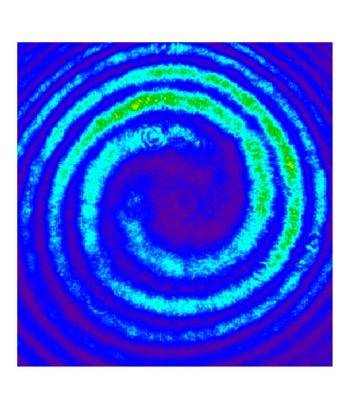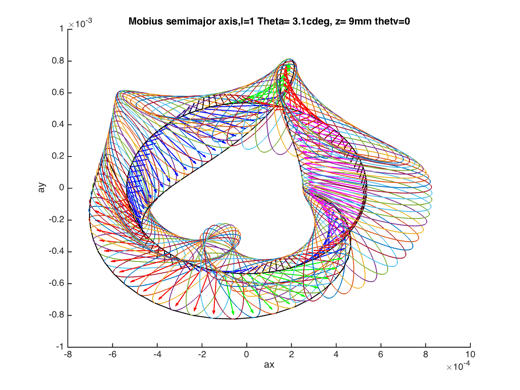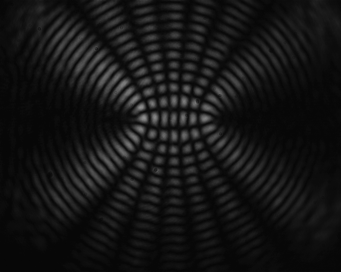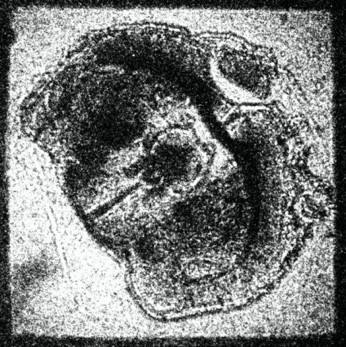Research is an integral part of education in the Physics & Astronomy Department at Colgate. Students will get to participate in various research activities with the faculty members either during the semesters or summers. Our faculty members consistently publish their work in peer-reviewed research journals and more importantly, many of those papers include our undergraduate students as co-authors.
Students in our department are required to carry out research for at least one semester of their senior year in order to graduate. In addition, Colgate also supports numerous on-campus summer research opportunities which allow students to research with the faculty members for eight to ten weeks. There are also opportunities to participate in research activities during the semesters. In addition, students can propose and work on "student-initiated" research projects under the guidance of faculty members.
Below is the list of research projects currently being carried out in the department. Followed by it are some of the papers published over the last two years in which undergraduate students have shared authorship with our faculty members.
Faculty Research Projects
I have a wide range of projects going on in my lab, so there are opportunities for students at all levels to get involved.
I use time-domain terahertz spectroscopy to study the electronic properties of materials. The terahertz region corresponds to meV energies. Spectroscopy is how we probe the energy levels of materials, and, of course, quantum mechanics tells us that energy levels are one of the fundamental properties of a system. I’m currently using this technique to study resonators made from carbon nanotubes. This spectroscopy technique is based on a femtosecond laser to create broadband pulses, and it also gives students the opportunity to develop skills in electronics and cryogenics.
I also have an ongoing project developing a system to quantify insulation in buildings, which is a great project for students who are interested in sustainability, since measuring insulation is a first step in decreasing energy use. It involves both hands-on measurements and computational modeling.
Finally, based on my Fulbright fellowship in Uganda, I’m working to quantify and identify the atomic composition of airborne particulate matter (pollution) that was collected in three regions of Uganda. This problem involves developing procedures to use existing instruments on campus.
I use computational methods, data analysis, and forecasting techniques to connect experiments and theory in cosmology. My work focuses primarily on Dark Matter and its potential observable signatures. For example, I have explored how Dark Matter affects the formation of the first stars in the Universe. One of the most striking consequences we find is that they can become as massive as a million suns. Those enormously bright objects, formed during the cosmic dawn era, could potentially be detected by the James Webb Space Telescope. My collaborative work on this subject has been published in multiple peer-reviewed journals and was popularized in magazines such as New Scientist, Sky and Telescope, Scientific American, and Astronomy Magazine.
Current research interests, in addition to those listed above, include the exploration of Dark Matter in non standard cosmological histories, and the effects Dark Matter captured by compact astrophysical objects has on their evolution. Namely, I am interested in what we can learn about Dark Matter from the upcoming observations of the first stars with JWST and/or the ROMAN (WFIRST) telescopes.
Studies of Phenomena and Singularities with Light: In this research we study the subtle properties of light that have rich and intricate connections. Light manifests in several, sometimes dissimilar, properties. It allows situations where places in space produce a conflict, which is mathematically known as a singularity. It is a place where a function is multiply defined. These singularities can form topographies that resemble arrangements of objects often found in dissimilar contexts in nature, such as in the form of shells or the shape of microscopic proteins. There is a beauty in the phenomena because it follows elegant mathematics, such as Bessel functions, ellipses or Mobius strips.
Light patterns show wave properties where the phase of the waves can produce interesting effects, such as optical vortices, where the wavefront, or surface that joins the crests of valleys of the light form intertwined helices as it propagates. Over the years we have studies various ways in which to create light beams that carry these vortices and studies their fundamental properties and their potential use as carriers of information in communications.

Because light propagates in 3 dimensions, the plane of oscillation of the can have any orientation. This directional aspect of light is called the polarization. Singularities in polarization can produce mathematical knots and topological features that are rich complexity yet invisible unless we look for them. Recent works done at Colgate include the discovery of novel forms of singularities known as “monstars.” Because the wave is carried by electric and magnetic fields, these intricate arrangements can be used to apply forces in unique ways and for manipulating matter at the microscopic level.

As light moves about in space it congregates and dissipates creating interesting patterns of intensity known as caustics, where progressions end abruptly in “catastrophes” producing beautiful effects such as rainbows an halos. Interestingly, the mathematics behind the propagation of particular wave patterns leads to “optical analogies,” where light intensity has the same value as physical properties in other contexts. Our recent work involves using light to simulate quantum mechanics and general relativity.

When light intensity is decreased, it does not do so gradually to zero. At some level we observe a granularity, where clumps of light behave like particles, clumps that are known as photons. At the photon level the rules of behavior change and light is governed by quantum mechanics. This produces striking effects that we do not see in ordinary life, such as entanglement. We have devoted much time to highlight these quantum effects and created laboratories and a unique curricular experience. It is important that all students know quantum physics because it is increasingly been harnessed to provide information in a new way that could revolutionize computation and the technologies that involve very sensitive measurements, such as in medical diagnosis.

Prof. Jonathan Levine is a planetary physicist participating in an effort to build a rock-dating instrument that is suitable for spaceflight. The ultimate goal is to measure the absolute ages of key events in Solar System history, in order to understand the timescales of planetary evolution. The development of a new instrument means that there is no user's manual; therefore students working on this project look at the data we collect to help understand how and how well the instrument works under diverse conditions and with diverse samples. Students deepen their understanding of rocks and meteorites as recorders of events in the Solar System's past, and hone their skills in data analysis and numerical simulation.
My research interest is on studying the electronic properties of biomaterials and developing biodegradable "green" electronics. Therefore, the work done in my lab draws knowledge from physics, chemistry, engineering, and also some biology. Any student who has taken introductory physics and/or chemistry can join the lab. Highly motivated first-year students are welcome to inquire about the opportunities. In addition to learning about the physics of charge transport in biological materials, students working in my lab will develop skills in electrical characterization techniques for systems ranging from macro to nanoscale in size. Students will also get to build electronic devices with various functionalities. Below are the projects that are currently active in my lab:
- Leaf-based electronics: For this project, we try to take advantage of leaf architectures and inherent ion-conduction while also sometimes introducing conducting polymers to enhance electronic conduction inside the leaves to develop leaf-based biodegradable electronic devices.
- Aromatic amino acid-based nanostructures: For this project, we self-assemble aromatic amino acids into nanostructures such as nanorods, nanowires, and nanosheets, study their charge transport properties, and develop biodegradable, biocompatible electronic devices.
Biominerals are extraordinary composite materials made by living organisms. Examples of biominerals range from teeth and bones to exoskeletons and shells. The diversity in form corresponds to diversity in function, composition, and structure. Some calcium carbonate (CaCO3) biominerals have highly ordered structures, with nacre (mother-of-pearl) being a prime example where the CaCO3 tablets are intermixed with organic molecules to make a brick wall of incredible strength. Other CaCO3 biominerals have no apparent structure, but rather have CaCO3 crystals oriented in random directions and mixed in no discernable organization with organic molecules. Two of these “disordered” CaCO3 biominerals are the adhesives of the Eastern oyster and the barnacle exoskeleton. To better understand how these materials function, we will explore the structure (light microscopy and scanning electron microscopy with electron backscatter diffraction), composition (energy dispersive x-ray spectroscopy and infrared spectroscopy), and materials properties (hardness and fracture resistance). More specifically, one project will examine the development of the Eastern oyster adhesive by studying both larval and adult oysters. The second project will focus on the development of the barnacle exoskeleton and the impact of changing ocean temperatures and pH on the formation process.
My primary research project is a long-term study of the optical variability of a type of Active Galactic Nuclei known as quasars, located at distances of billions of light years. The optical emission we observe is produced from jets of electrons moving near the speed of light that have been ejected from the region around a supermassive (usually billions of solar masses) black hole located in the center of a galaxy.
My research students and I use the Colgate Foggy Bottom Observatory 16-inch Ferson optical telescope and Finger Lakes Instruments CCD camera to image the fields of two dozen of the most active bright quasars. From these images we can determine the optical brightness of the quasar using nearby comparison stars of known brightness. This three-decade long study investigates the optical variations with timescales ranging from intranight to decades.
I am also involved in the ALFALFA survey project to measure the neutral atomic hydrogen (HI) content (mass) of galaxies in the local universe using observations from the former Arecibo Observatory 1000-foot radio telescope in Puerto Rico. The Undergraduate ALFALFA Team, a consortium of 25 primarily undergraduate institutions, has conducted follow-up HI observations using the Arecibo telescope and the Green Bank (West Virginia) Observatory 100-meter radio telescope.
Selected Recent Publications
Our students are involved in various research activities within Physics & Astronomy Department as well as with other departments on campus or even outside Colgate. Some of these works have resulted in the publication of their findings in peer-reviewed journals. Below are some of such papers published in recent years that include at least one of our undergraduate students.
(The undergraduate student researchers are indicated by the underlined italic font. Physics & Astronomy faculty mentors are indicated by bold font.)
- Enrique J Galvez, Chan Ju You, Valeria Rodríguez-Fajardo, Leia Francis ('25), Bill J Luo ('26), and Carlos Cardoso-Isidoro. "Nonclassical Mueller polarimetry", Optics Express, 33, 24, (2025).
- Cosmin Ilie, S. Shafaat Mahmud ('26), Jillian Paulin ('23, and Katherine Freese. "Spectroscopic Supermassive Dark Star Candidates", PNAS, 122, 40 (2025).
- Jared Dicks ('25) and Cosmin Ilie. "Constraining asymmetric DM properties by black hole formation in neutron stars and Population III stars", Journal of Cosmology and Astroparticle Physics, 09, 017 (2025).
- Neha M. Viradia ('25), and Ramesh Y. Adhikari. "Leaves for high power density hydrovoltaic generators", iScience, 28, 6, 112601 (2025).
- Valeria Rodrigeuz-Fajardo, Thao P Nguyen ('22), and Enrique J Galvez. "Quantum Inspired 3D Pendulum Beams", Journal of Optics, 27, 4, 045609 (2025).
- Richard Casey ('24) and Cosmin Ilie. "Dark Sector Tunneling Field Potentials for a Dark Big Bang", Physical Review D, 110, 103522 (2024).
- Noah Hann-Deschaine ('24), Neha M. Viradia ('25), Jeiko J. Pujols ('23), Sarah Miller ('24), and Ramesh Y. Adhikari. "Vertically Grown Bioinspired Diphenylalanine Nanowire-Coated Fabric for Oil–Water Separation", ACS Applied Engineering Materials, 2, 8, 2219-2226 (2024).
- Cosmin Ilie, Caleb Levy ('23), and Jared Dicks ('25). "The effectiveness of exoplanets and Brown Dwarfs as sub-GeV Dark Matter detectors", Journal of Cosmology and Astroparticle Physics, 04, 082 (2024).
- Saiyang Zhang ('19), Cosmin Ilie, and Katherine Freese. "Detectability of Supermassive Dark Stars with the Roman Space Telescope", The Astrophysical Journal, 965, 121 (2024).
- Rebecca A. Metzler, Julia Zaborowsky ('22), Leon Nichols ('23), Jack Underhill, Jack Tregidga ('21), Chelsea Rogers, Deniz Rende, Steven Bouillon, David P. Gillikin. "Exploring the Mineral Composition, Structure, and Function of a Freshwater Bivalve Adhesive", Advanced Materials Interfaces, (2024).
- Bill J. Luo ('26), Leia Francis ('25), Valeria Rodriguez-Fajardo, Enrique J. Galvez, and Farbod Khoshnoud. "Young's double-slit interference demonstration with single photons", American Journal of Physics, 92, 308-316 (2024).
- Cosmin Ilie, Jillian Paulin ('23), and Katherine Freese. "Supermassive Dark Star candidates seen by JWST", PNAS, 120, 30 (2023).
- Ken Segall, Cheeranjeev Purmessur, Anthony D'Addario, and Dan Schult. "A superconducting synapse exhibiting spike-timing dependent plasticity", Applied Physics Letters, 122, 242601 (2023).
- Nicholas S. DiBrita and Enrique J. Galvez. "An easier-to-align Hong–Ou–Mandel interference demonstration", American Journal of Physics, 91, 307 (2023).
- Div Chamria, Christopher Alpha, and Ramesh Y. Adhikari. "Phenylalanine-assisted conductivity enhancement in PEDOT:PSS films", ACS Omega, 8, 8 (2023).
- K. Paige Williams, Noah Hann-Deschaine, Div Chamria, Hans T. Benz, and Ramesh Y. Adhikari. "Facile fabrication of triboelectric nanogenerators based on paper and natural rubber as low-cost bio-derived materials", Discover Materials, 3, 1 (2023).
- N.G. Hallfors, D. Maksimovski, I. A. H. Farhat, M. Abi Jaoude, A R. Devarajan, K. Liao, M. Ismail, H. Pade, R. Y. Adhikari, and A. F. Isakovic. "Layered tunable graphene oxide-nylon composite heterostructures for wearable electrocardiogram sensors", Applied Physics Letters, 122, 013701 (2023).
- E. J. Galvez, B. Sharma, F. K. Williams, C. J. You, B. Khajavi, J. Castrillon, L. Shi, S. Mamani, L. A. Sordillo, L. Zhang, and R. R. Alfano. "Decoherence of photon entanglement by transmission through brain tissue with Alzheimer's disease", Biomedical Optics Express, 13, 12 (2022).
- Cosmin Ilie and Jillian Paulin. "Analytic approximations for the velocity suppression of dark matter capture", The Astrophysical Journal, 932, 46 (2022).
- R.Y. Adhikari and Jeiko J. Pujols. "Highly rigid & transparent supramolecular fibrils of tyrosine", Nano Select, 1 (2022).
- C. Ilie, C. Levy, J. Pilawa, and Saiyang Zhang. "Constraining dark matter properties with the first generation of stars", Physical Review D, 104, 123031 (2021).
- C. Ilie and C. Levy. "Multicomponent multiscatter capture of dark matter", Physical Review D, 104, 083033 (2021).
- R.Y. Adhikari, Nicole E. Harmon, K. Paige Williams. "Pristine Leaf Based Electrochemical Resistive Switching Device", Applied Materials Today, doi:10.1016/j.apmt.2021.101077 (2021).
- E.J. Galvez, F.J. Auccapuclla, Y. Qin, K.L. Wittler and J.M. Freedman. "Pendulum beams: optical modes that stimulate the quantum pendulum", Journal of Optics, 23, 2 (2021).
- C. Ilie, J. Pilawa, and Saiyang Zhang. "Comment on 'Multiscatter stellar capture of dark matter'", Physical Review D, 102, 048301 (2020).
- Z. Weaver, T. Balonek, D. Dougherty, J. Slater, et. al. “Multiwavelength Variability of BL Lacertae Measured with High Time Resolution”, The Astrophysical Journal, 900, 137 (2020).